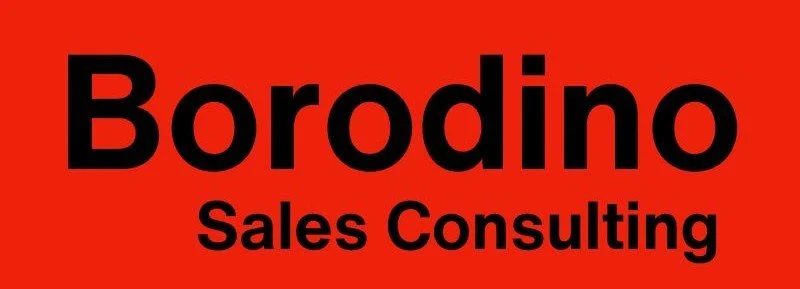Sales Prospecting Tips: How-To Guide
The Truth About Sales Prospecting: How to Build Real Pipeline in Today’s Market
When it comes to prospecting in business, most sales reps either overcomplicate it - or avoid it altogether. If you want to consistently build a healthy pipeline and close high-value deals, you need to master the foundational prospecting skills that top sellers use every day.
Forget outdated scripts and spray-and-pray email blasts. Modern sales and prospecting requires a balance of strategy, relevance, and consistency. Whether you're booking your first meeting or building a long-term outbound engine, strong prospecting habits are the difference between missing quota and crushing it.
In this post, we’ll break down the core truths about sales prospecting, and how to actually turn outreach into revenue.
What Is Sales Prospecting (and What It’s Not)
Sales prospecting is the process of identifying and initiating contact with potential customers in order to generate new business. It involves research, outreach, and qualification - often the first step in the sales funnel.
Here’s what prospecting is not: It’s not aimless cold calling. It’s not sending 100 templated emails a day. And it’s definitely not a one-size-fits-all script.
Effective prospecting in business is about quality over quantity. It’s about identifying the right-fit customers and starting meaningful conversations that lead to sales opportunities.
Why Prospecting Still Matters
In an age of automation and instant access to information, it's tempting to think that prospecting has become obsolete. The truth is, most deals still begin with a human-initiated conversation. Whether through email, phone, or social media, the outreach you do today sets the tone for the relationships you'll build tomorrow.
Great sales teams know this. That’s why companies that excel at sales and prospecting see stronger pipelines, shorter sales cycles, and more predictable revenue. In a competitive landscape, the ability to consistently connect with decision-makers is a powerful differentiator.
5 Traits of Effective Prospectors
Discipline
Great prospectors are consistent. They block time daily and stick to the plan, even when it’s hard.Research-Oriented
They don’t pitch blindly. They understand the buyer’s industry, challenges, and priorities before reaching out.Resilient
Rejection doesn’t faze them. It sharpens their message.Curious
They ask good questions and listen for real signals, not just pain points.Metrics-Driven
They know their numbers: how many touches, how many meetings, how many deals. And they improve based on the data.
How to Improve Your Prospecting Skills
Want to get better at sales and prospecting? Start with these action steps:
Define your ICP (Ideal Customer Profile): The more specific, the better. Know their pain points, goals, and how your solution fits into their world.
Build multi-channel sequences: Don’t just rely on email - mix in calls, social touches, and even direct mail.
Write custom intros: Tailor the first sentence of every message to the prospect’s world. Reference their work, recent news, or something relevant to them.
Follow up relentlessly: 80% of meetings come after the fifth touch. Persistence shows professionalism when done respectfully.
Track everything: Use a CRM or spreadsheet to monitor performance. Look for patterns in your response rates, conversion rates, and no-show rates.
A bonus tip? Record and review your outreach. Listening to your own calls or reading past emails can help you spot areas for improvement and sharpen your messaging.
Tools That Support Modern Prospecting
Technology can accelerate prospecting when used wisely. Here are a few categories of the tools that can improve your sales workflow:
Sales Engagement Platforms (like Outreach or Salesloft)
CRM Systems (like HubSpot or Salesforce)
Data Enrichment Tools (like ZoomInfo or Clearbit)
Social Selling Platforms (like LinkedIn Sales Navigator)
Remember, tools support your strategy, they don’t replace it. The best prospecting still relies on logical thinking, strong messaging, and building real connections.
Common Mistakes in Sales Prospecting
Even seasoned reps fall into bad habits. Here are a few to watch out for:
Sending generic messages: Lack of personalization is the quickest way to kill interest.
Not qualifying leads: Time is money so focus on people who truly match your ICP.
Giving up too soon: Many reps stop following up after one or two attempts.
Ignoring buyer signals: If a prospect clicks a link or opens an email three times, follow up.
Not adapting: Prospecting that worked last quarter might need to evolve.
Avoiding these pitfalls can help you build more trust, generate more meetings, and close more deals.
Ready to Level Up Your Prospecting?
At Borodino Consulting & Media, we help B2B teams develop effective sales and prospecting strategies that actually work. Whether you're building your pipeline from scratch or refining your outreach, we can help you implement a process that scales.
Book a free consultation to learn how we can support your sales team.
https://www.borodinoconsulting.com/contact-us
FAQs About Sales Prospecting
What is the first step in sales prospecting?
Researching and identifying your ideal target customer that has a need for your service or product.
How many times should I follow up with a prospect?
At least 5–7 times across multiple channels.
What’s the difference between lead generation and prospecting?
Lead gen brings contacts into your funnel, whereas prospecting means actively qualifying and reaching out to them.
Is cold calling still effective?
Yes, when it is highly targeted and personalized.
What tools can help with prospecting?
Look into CRM platforms, engagement software, and data enrichment tools to streamline your process and target warmer leads.
How long should a prospecting message be?
Short and relevant. Approximately 2–3 sentences that focus on the prospect's needs.


